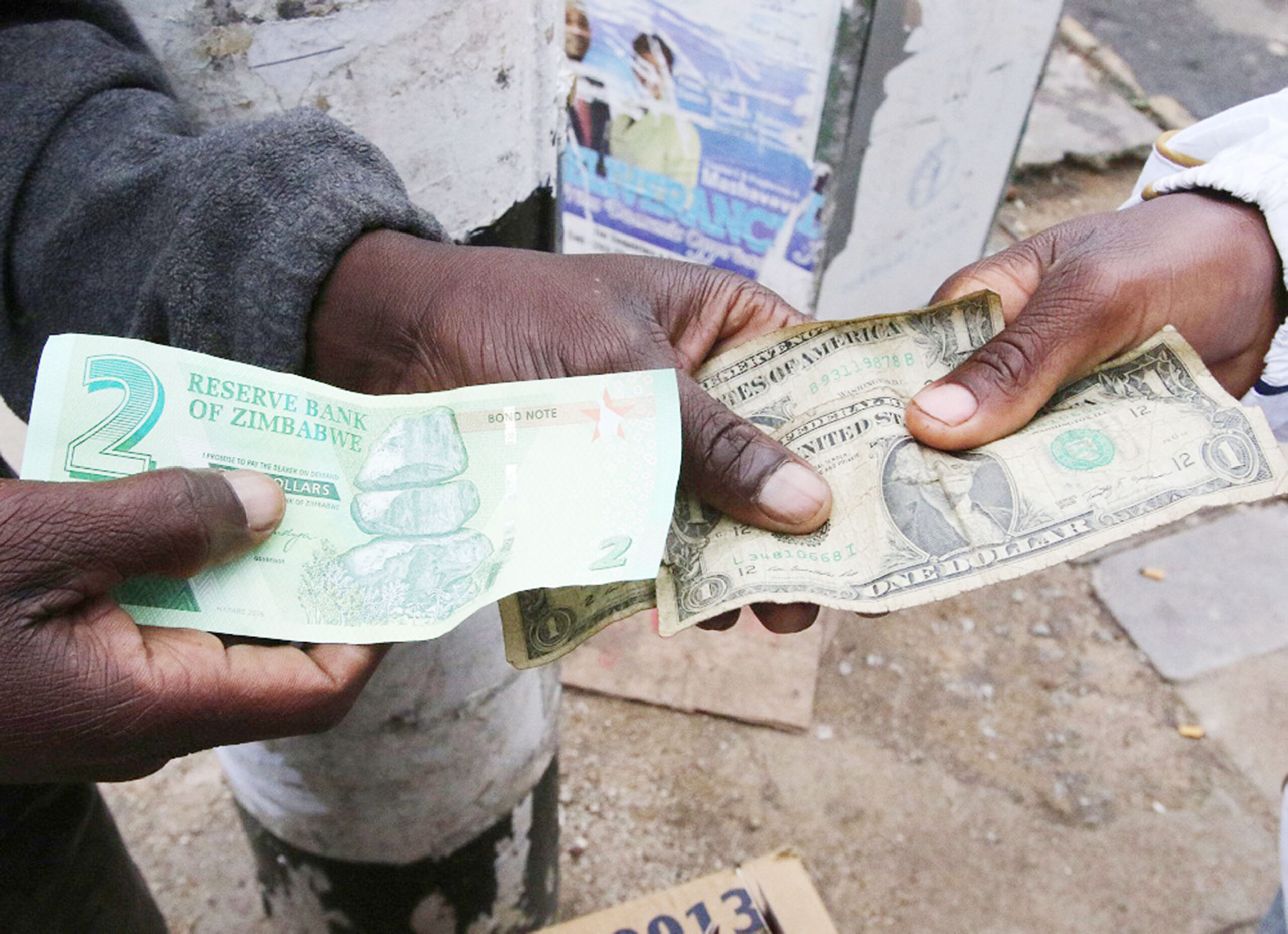Zim’s never-ending currency challenges: What will it take to overturn the crisis?
Zimbabwe’s cycle of never-ending currency crises continues to haunt the economy despite several efforts employed, such as the introduction of new currencies including the Zimbabwe Gold (ZiG) in April, backed by gold and other critical minerals.
The currency crisis in Zimbabwe has its roots in money supply growth by the central bank and the lack of fiscal discipline by some authorities.
However, since its introduction in April this year, the ZiG currency has managed to broker some stability but is now facing renewed volatility as it has depreciated rapidly especially on the unofficial markets.
On the interbank or formal exchange rate, the ZiG experienced a notable decline on September 13, 2024, trading closer to ZiG14 per US dollar, marking one of its worst performances to date.
On the parallel market, the local unit is selling for between 28 and 31 per greenback, while informal shops are using a rate of 20 for notes.
Experts who spoke to Business Weekly said the Zig, which started trading on April 8, is among the many currency initiatives that the Government has implemented in pursuit of a stable currency.
Unfortunately, they say with no currency reforms in sight and a huge confidence deficit from economic players, ZiG will falter like other local currencies did.
“All we need is for the monetary and fiscal authorities to normalise market interventions in times of shocks like the current one.
“Monetary authorities should intervene by upscaling injections of forex in the interbank market to guarantee convertibility of ZIG, especially now when widespread acceptance has resulted in increased demand for forex for importation of goods and services,” economist Persistence Gwanyanya, who is also a member of the Reserve Bank of Zimbabwe Monetary Policy Committee, told Business Weekly.
He noted that despite the current shocks on ZiG stability, there is greater scope for the currency to deliver permanent stability.
“The beauty about this current situation is that the RBZ has the required reserves to intervene.
“RBZ reported that at US$375 million, international reserves provided four times cover to ZiG reserve money in June 2024.
“The time lag taken to intervene could be an indication that de-dollarisation unravelled faster than authorities’ expectations.
“Now, such intervention is seen as reserving the currency depreciation and anchoring expectations with the concomitant effect of stabilising ZiG,” said Gwanyanya.
He also noted that the benefit of ZiG stability is only realisable when authorities intervene in the market by liquidating the precious mineral and injecting forex in the market.
The interbank exchange rate is linked to global gold prices, whereas the parallel rate is driven by market forces of demand and supply.
In previous attempts on currency, in 2009, soaring inflation prompted the country to ditch its local currency in favour of a series of foreign currencies led by the United States dollar.
But “dollarising the economy hit its boiling point in 2015 when greenbacks started vanishing from the formal banking system”.
In a bid to end the US dollar shortage, Zimbabwe’s central bank in 2016 introduced bond notes, a form of surrogate currency that was backed by a $200 million bond facility from the Africa Export-Import Bank.
However, black market speculation quickly eroded the bond note’s value, triggering a shortage that the central bank tried to offset by creating electronic notes.
In February 2019, bond notes both physical and electronic were merged into the Real Time Gross Settlement (RTGS) dollar, also known as the Zimdollar.
Since then, the US dollar and other foreign currencies have been widely used throughout the economy, and the US dollar currently accounts for more than 80 percent of all transactions in the economy.
The Government says it is currently implementing a de-dollarisation plan that is aimed at reversing the dominance of the US dollar in favour of ZiG.
Economist, Eddie Cross, said in order for Zimbabwe to triumph over the currency crisis, the central bank should float the ZiG on the interbank market and allow everyone to use the exchange rate for every day trade while at the same time lifting exchange control on the current account.
“They should start directing hard currency from as many sources as possible onto the interbank account until the ZIG exchange rate is stable.
“If our recent history is anything to go by, the consequences of staying on our present course will be the complete failure of the ZIG and its abandonment as a means of exchange.
“In the process, many firms will not survive, and the country will continue to informalise and tax revenue decline.
“This crisis is with us now and must be addressed,” he said.
Economist, Victor Bhoroma, said it takes political will to reform the governance and modus operandi of the central bank.
He said this involves the central bank ceasing all quasi-fiscal operations to do with financing banks for onwards lending, parallel funding of Government projects, and virtual money printing to finance surrendered export earnings.
“Nothing has changed since 2018, and there are no reforms being implemented, save for a new local currency name in ZiG.
“Zimbabwe needs a managed floating exchange rate where banks are matchmakers with the central bank playing supervision and regulatory roles only not allocating foreign currency or pegging exchange rates as is the case now,” he said.
He added that the Government should also spend below taxable revenues and borrow to finance spending gaps instead of using the central bank overdraft to finance billions of budget overruns.
Financial Economist, Malone Gwadu, told Business Weekly that the inherent structural vulnerability of the ZiG is now being experienced due to increased demand for forex to import food to cushion against hunger as well as depressed global commodity prices.
“Other variables, such as the electricity deficit, have put immense pressure on the ZiG despite conservative and liquidity-prohibitive monetary policy policies undertaken.
“So, we are at a point where there is a need to douse the pressure through increasing demand for the ZiG and the only option is to squeeze out foreign currency from the transacting public and reduce pressure on the ZiG,” he said.
Another economist, Vince Musewe, said it is clear that the value of ZiG has nothing to do with the price of gold but has more to do with market value perception and confidence in the ZIG.
“That market is mainly informal and is not influenced by RBZ policies or pronouncements but rather by sentiment and the general expectations of whether things are getting better both economically and politically,” he said.
Dr Prosper Chitambara, an economist, said demand for the US dollar has been increasing on account of a number of factors, including the rising imports on account of the drought.
“However, that excess demand has not been matched by available supply on the interbank market; hence, that mismatch is causing the ZiG to depreciate on the parallel market,” he said.
Tapiwa Karoro, the Zimbabwe National Chamber of Commerce (ZNCC) president, last month told Business Weekly that as long as the country continues to have US dollar-based local transactions, collectively, both the private and public sectors will therefore continue to put a strain on the availability of US dollars in circulation.
“This is why the issue of having a stable local currency is very important. We must remember that we do not produce, or rather print, US dollars.
“So, the mismatch will continue to prevail as long as we have what should be locally or rather ZiG-denominated transactions having to be paid for in a foreign currency,” he said.
He added that, for instance, things like rentals are being paid in US dollars, the same as wages and salaries.
“Ordinarily, we would all be earning our wages and salaries in our local currency. Payment of utilities: understandably, some of these utilities, like electricity, require ZESA to be able to meet its offshore obligations. But this is where the issue of the trade balance becomes important,” he said.
Karoro said the US dollars that the country is generating vis-à-vis our import bill indicate that the economy should be able to meet its import bill from the forex generated from exports.-ebsienswekl








